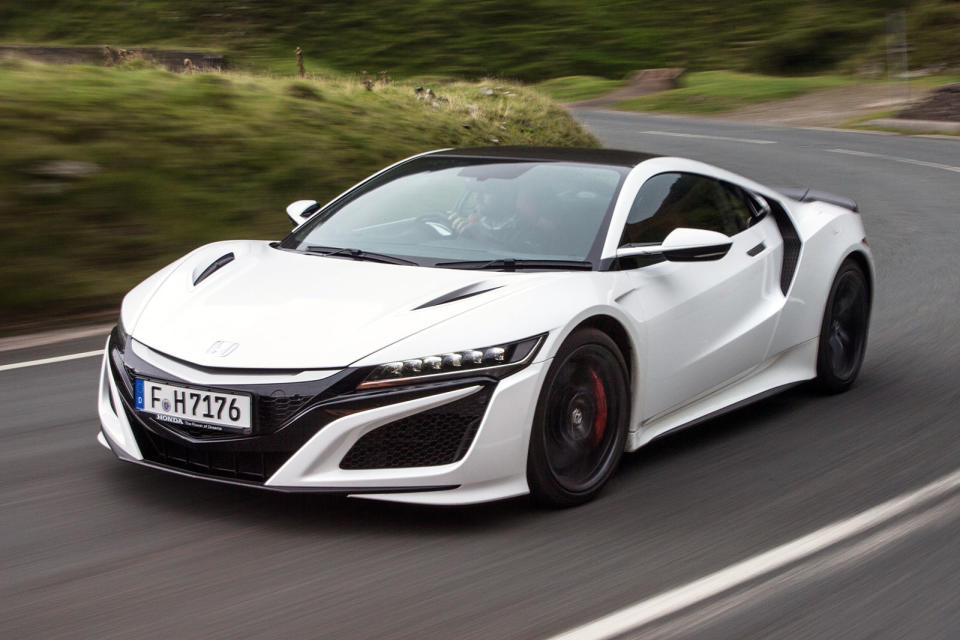Honda NSX

Many wonderful and stupendous cars have emerged from Japan since Soichiro Honda’s firm launched the S500 in 1963, but none of them has resonated internationally with the force or sheer mystique of the NSX.
Conceived in the mid-1980s pomp of Honda’s (and Japan’s) supreme confidence that there was nothing being done in Europe that could not be bettered domestically, the ‘New Sportscar eXperimental’ was inspired by the F-16 fighter jet, built to outmatch a Ferrari 348 and underpinned by a chassis breathed on by Ayrton Senna.
When it went on sale in 1990, the NSX’s exotic combination of materials and expertise – the monocoque was aluminium, the engine’s connecting rods were titanium, even the paint job had a 23-step process – was like nothing else on sale and certainly nothing else for the money.
When Gordon Murray drove one while developing the McLaren F1, he said all other benchmark cars vanished from his mind. It was that astonishing.
Which, of course, makes it conspicuously hard to follow up and is one of the reasons Honda hasn’t managed it until now.
A successor was planned for 2010, powered by a V10 engine, but was culled by the same economic downturn that resulted in the company quitting F1.
Video
The job finally fell to a small team in Honda’s US division, bolstered by engineers from Japan who had been involved with the original NSX.
This combination, underwritten by hefty investment from the manufacturer’s US-market luxury vehicle arm Acura, has produced the same result: a contemporary supercar intended to compete on price, performance and usability with anything built in the Old World.
To do that, it is a hybrid in the McLaren P1 sense (there are three electric motors dotted about the place) and uses a newly developed twin-turbo 3.5-litre V6 in the middle of a mixed-material spaceframe.
The car is intended to work just as well on the road in Palm Springs as it is does on a circuit in England – which is about as terrifyingly wide a brief as you can imagine – and it’s all-wheel drive to boot.
It’s also £143,950 on the road, meaning you could have a McLaren 570S for about £500 less. Honda’s ambitions, at least, have not diminished. But does the car at the end of them deserve its badge?
]]>

 Yahoo Autos
Yahoo Autos 
